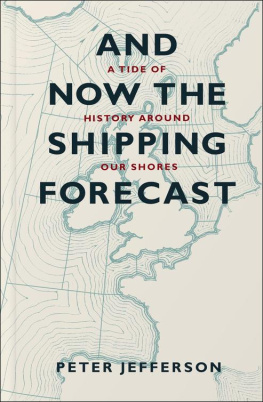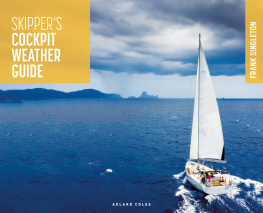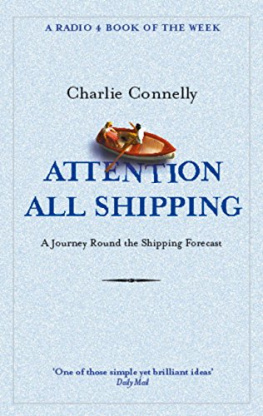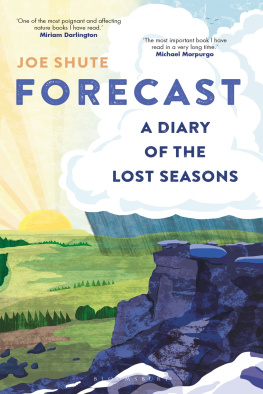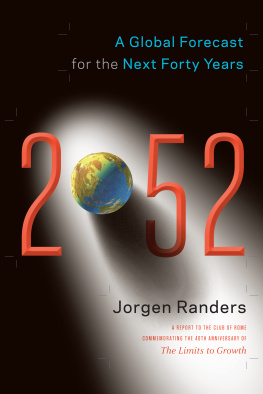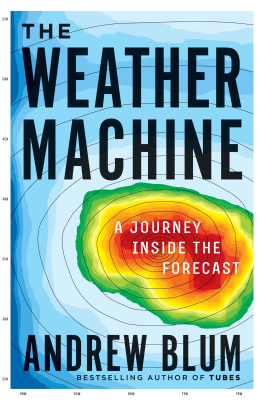My thanks must go first of all to my editors Catheryn Kilgarriff and Niall Mansfield at UIT Cambridge for taking a punt in asking me to write this book, and for their patience and encouragement throughout its gestation.
Also my love and thanks to Penny for her patience and understanding at my long absences from family life into what I laughingly call my office to write this book over the course of several months. Im not sure what the writers equivalent is to a golf players grass widow but she has been it, and brilliantly supportive to boot.
Lastly, a big thank you to my friends and ex colleagues at both Radio 4 and Radio 2 and elsewhere for their amusing stories, some of which found their way into this volume, although others were excluded on the grounds of being far too rude. I trust you are on this list. If not, please forgive me.
Nigel Rees, David Miles, Carolyn Brown, Brian Perkins, Ken Bruce, Sean Street, Mark Beswick at the Met Offices National Meteorological Library and Archive, Zeb Soanes, Carol Ann Duffy, The Science Museum, Gillian Clarke, Iain Purdon, Colin Berry, John Marsh, Corrie Corfield, David Willmott, Colonel R.G. Gilliat (Retd), MBE Admiral Sir Michael Layard (Retd), KCB, CBE, Robin Brodhurst, Ron Obbard, Mark Damazer and Gwyneth Williams.
And now the Shipping Forecast Over the past seven or eight decades, those words are among the most well known to emanate from wireless sets (or, later, radio sets) to listeners in the UK and its surrounding sea areas.
There are warnings of gales in sea areas When I was a small boy in the late 1940s, the Shipping Forecast had already come of age, as it had reached 21 when I was but a year old. Hearing the forecasts on our rather damaged white Bakelite wireless at my home in Deal on the Kent coast is one of my earliest memories. I was much too young then to understand the Shipping Forecasts importance or relevance, let alone imagine that one day I would be reading out those words and would continue to do so for some 40-plus years. I was far more interested in hearing Listen With Mother.
The general synopsis Now we are firmly embedded in the 21st century, with all its technological advances. Mariners had, in fact, already been using sat nav for many years long before we started using it in our cars. And they can now get access to the forecast by all sorts of means. So why listen to it on the rather crackly 198 long wave on BBC Radio 4? Isnt it easier just to tap into it on the Internet whenever you so wish?
Has the Shipping Forecast lost its audience? It seems no it has taken on an entirely new mantle. Where once it was the mainstay of fishermen and all other shipping traffic around not just our shores but right down to Portugal, southern Spain and parts of north Africa, it has also gained over the decades many new listeners the bulk of whom have never set to sea except perhaps on a short Channel ferry crossing. Late at night, before Radio 4 hands over to the BBC World Service, it has become something of a must hear before the cloak of sleep envelops the listening public.
SO WHERE ACTUALLY
ARE ALL THE SHIPPING AREAS
THAT YOU HEAR ABOUT?
As you can see on the map below, the areas start in the north east with Viking and the Utsires, then follow the east coast of Scotland and England, along the English Channel, and down to Biscay, FitzRoy and Trafalgar off the French, Spanish and Portuguese coasts. Heading north again, through Sole, they spread around both sides of the island of Ireland and end with Fair Isle, Faeroes and South East Iceland in the north west. So you can see clearly that a wind blowing from the north west comes straight from Iceland to the UK, usually bringing colder weather along with clouds of volcanic ash whenever an Icelandic volcano decides to blow its stack.
The area forecasts for the next 24 hours Despite most people not knowing much about the shipping areas or what the forecasts really mean, many have been touched by the Shipping Forecasts unusual litany of facts and figures. It has also been easy game for comedic treatment for instance Eccles in The Goon Show did winds light to variable for his BBC announcers audition and it has been used by various pop groups and film-makers. It has inspired poems by Carol Ann Duffy, the Poet Laureate, Gillian Clarke, the former National Poet of Wales, and Sean Street to name but three who have thrown in their hats. It has without doubt permeated the British psyche in a most extraordinary way.
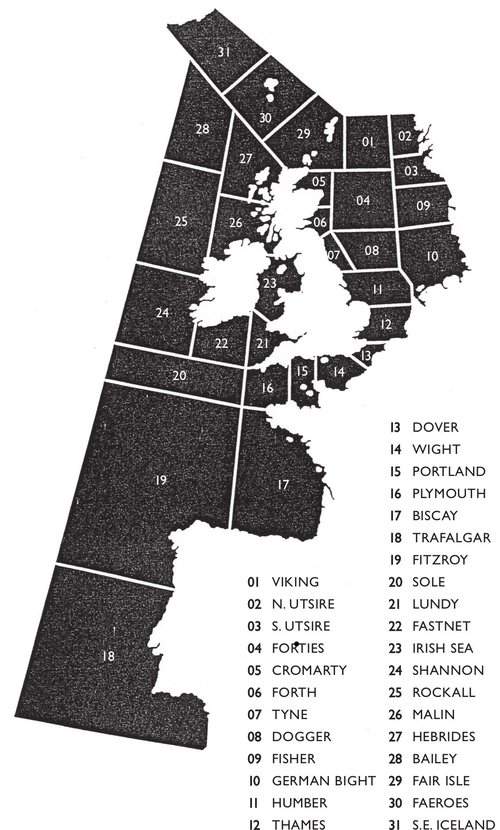
Modern-day shipping areas (2010)
When Mark Damazer, the former controller of Radio 4, was asked if he could see the removal of this radio institution, he said in effect that in spite of many other ways of getting hold of the information, the four Radio 4 forecasts each day might just save someones life, and meanwhile, he had high regard for its intrinsic and ever-widening appeal to listeners the length and breadth of the UK and beyond such is the range of the long wave transmitter. The fact that most people have no idea what it all means seems to matter not a jot!
SO, WHERE TO START
IN THIS EVERYDAY
STORY OF MARINER FOLK?
Unlike nowadays, once the fishing industry was not in peril of running out of stock or being strangled by EU legislation, but the brave men who went to sea to supply the nation with readily available and nutritious food took huge risks and often still do especially in some of the more treacherous waters, where weather conditions can change suddenly. How to help them make their lives safer was the question posed.
Various means for transmitting forecast bulletins to fishing boats were tried in the early 20th century more on these in the next chapter but in the 1920s the BBC became involved.
On November 14th, 1922, the BBC broadcast its first weather forecast, using telegraphy and BBC Transmitters and two years later it began the daily broadcast for shipping that, despite changes in format, frequency and indeed to some extent content, was very much the forecast that we are still all familiar with today. In the 1920s the BBC was still in its infancy, but Lord Reith and Co. quickly realised that this new-fangled means of educating, informing and entertaining the general public was catching on fast. Daily listening figures could reach 15 million, levels hard to imagine even in TV terms these days. So rapid advances were being made to widen coverage, and in 1925 a brand new long wave transmitter at Daventry began broadcasting the National Service, in which the news of the day was reported in a completely impartial fashion; it reached about 94% of the UKs population! In 1934 the even more powerful Droitwich transmitter took over. This one is still working today, although is getting rather old now and has been known to fall over, but it still carries the Shipping Forecast far and wide.
Another early problem was how to compile the forecasts, from collecting and collating information from the manned coastal waters stations (they are automatic now) to getting that information to the BBC. There were different Government departments involved of course, all of whom had to agree on formats and protocols yes, there was plenty of red tape around then too and many of these emerging departments were jostling for position hoping to inflict pre-emptive strikes on other Whitehall mandarins. Some things dont change, do they?

